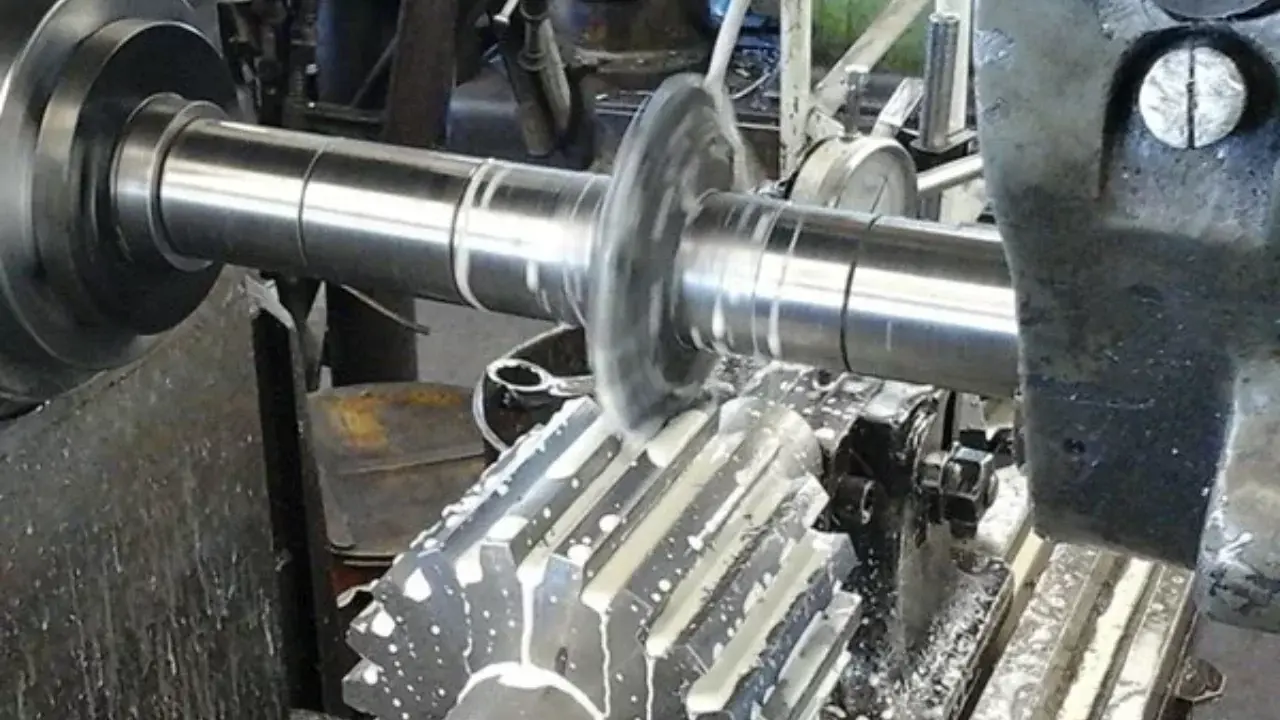Cutting tools are equipment that CNC service suppliers use to shape materials and create finished pieces on a lathe machine. These tools play a crucial role in CNC machining. Moreover, because there are various kinds of cutting equipment, there isn't a lot of information about how to use them.
As a result, this article will go into great detail about the many types of lathe tools used in CNC turning. This article will also teach you how to select the proper kind of cutting tools, as well as the various lathe-cutting processes. Let's get started.
Types of Cutting tools
The types of cutting tools CNC service supplier use are vast, and only a few types are given in this article. We can differentiate the types of cutting tools on the basis of four factors. Moreover, you should investigate the various types of cutting tools available at every stage.
- Material
- Structure
- The direction of the Feed
- Operations or applications
Material-Specific Lathe Cutting Tools
Several materials, with their own set of qualities, are appropriate for creating tools for milling service suppliers to use on a lathe machine. Each lathe-cutting tool has different qualities depending on the fundamental mechanical characteristics of the material. The following are the most popular lathe-cutting tools.
High-Speed Steel (H.S.S.)
steel, with a hot hardness value of around 600° C, provides good strength and shock resistance qualities. It is frequently used for single-point lathe cutting tools as well as multi-point cutting tools like drills, reamers, and milling cutters.
Carbides Cemented
A tungsten powder-based substance that is exceptionally hard. Carbide tools are typically utilized with brazed or clamped edges. High cutting rates are possible, and materials that are difficult to cut with HSS can be easily processed with a carbide-edge tool.
Operation-Based Cutting Tools
The cutting tools are also classified according to the lathe machining operation. The tools often used in each late machining procedure are listed below.
Turning tools
Turning tools can be employed to remove materials all along the length of an object. As a result, the diameter of the object becomes smaller. There are two varieties:
- Rough
- Finishing

Chamfering/counter sinking Tool
Chamfering/countersinking tools are lathe-turning cutting tools that are used to create a groove on a workpiece and polish holes, as well as deburr and smooth the edges following side-surface machining.
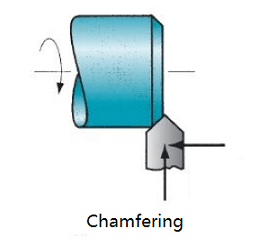
Thread-Cutting Tools
Thread-cutting tools can be employed to cut threads on a lathe item. The two most prevalent types are internal and external thread cutting. External thread cutting includes holding the workpiece in a chuck or mounting it between two centers. Internal thread cutting, on the other hand, involves holding the part in a chuck while the tool runs over it in a linear fashion, taking chips off the workpiece as it goes.
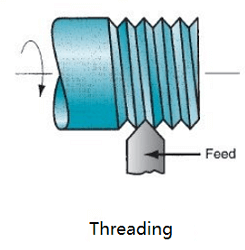
Facing Tool
A facing tool is a form of lathe machine tool used to produce a smooth surface angular to the rotational axis of a product. The workpiece on the lathe frame maintains the cutting tool during the operation, allowing it to feed angularly throughout the part's axis of rotation.
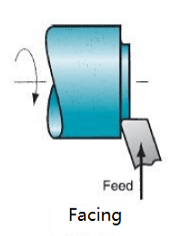
Grooving Tool
These cutters are useful for creating grooves on metal parts with curved surfaces. The shape of the cutting tool determines the shape of the grooves. V-shaped and rectangular-cutting equipment are frequently used.
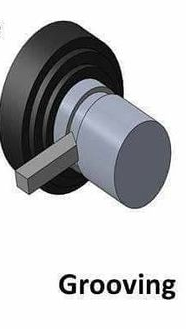
Forming Tool
A shaping/forming tool integrates a turning and grooving tool to create intricate forms at the same time. Whereas a turning tool will perform the same work, a forming tool is preferable since it improves precision and decreases turnaround time.
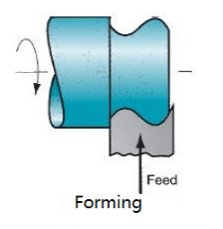
Boring Tool
A boring tool is a kind of lathe tool that is employed to expand a cavity. These rotating cutting tools are put into before the holes and used to expand the diameter of the cavities.
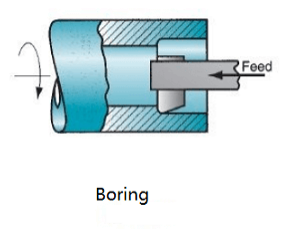
Structure-based Cutting Tools
In this category cutting tools are classified on the basis of their structures.
Single-Body Cutting Tool
They are made from one piece of material and have a defined shape, size, and geometry. As a result of their speed and strength, they are the most commonly used lathe machine tools.
Welding Cutting Tools
The head and rod of the cutting tools are made from two different materials that are welded together. The edge of the cutting tool is typically made of materials like carbide, which is recognized for its toughness and durability, whereas the body could be made of a variety of metals. These tools have less cutting speed than single-body tools because of the material variations.
Clamp Cutting Tool
The material composition of these cutting tools is comparable to that of welding tools. The clamp-cutting tool is made by putting the insert on a handlebar rather than a welding tool.
These tools are generally flexible and interchangeable. As a result, their qualities, such as durability and toughness vary according to the type of insert.
Feed Direction-based Cutting Tool
There are basically three categories of cutting tools on the basis of feed direction.
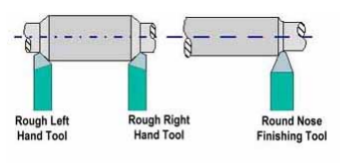
Right-hand Cutting Tool
The right-hand cutting tool removes the material while dragging from right to left. The right-hand tool resembles the human hand in appearance because the right thumb signals the feed direction, whereas the major cutting edge is on the tool's left side.
Left-Hand Cutting Tool
The left-hand cutting tool removes material while moving in the counter direction of the right hand. In this case, the left thumb indicated the feed direction.
Round Nose Cutting Tool
There is no back or side rake on a round-nose cutting tool. As a result, the tool is introduced from the left to the right or right to the left side. Although, the round nose tool may have a slight back slope in rare circumstances. These tools are useful for CNC service suppliers in finishing operations because of the round edge.
How Do I Choose the Best Lathe Cutting Tool?
There are various phenomena we need to consider while choosing the right cutting tool on a lathe machine. Here are some main factors milling service suppliers consider
Coating of Cutting Tools
The coating is the exterior part of the cutting tool. It increases the strength and hardness of the cutting tool. The coating is significant because coated cutting tools last more than uncoated tools. This coating includes coatings like Titanium Carbide (TiC), and Aluminum Oxide, each with unique features.
Materials Characteristics of Sample
Some materials are harder than others. Therefore, We have to choose cutting material that has more hardness and strength, so that during the machining operation the chipping of material can be avoided. For harder materials, Diamond and Cubic Boron Nitride cutting tools are famous for their hardness and adaptability.
Type of Operation
Every operation procedure demands a distinctive set of abilities and tooling. Therefore, you should make sure to choose the appropriate tool depending on the operation. For instance, Turning tools are only suitable to remove debris along the length of the object. But it is insufficient for forming processes
Shape of product
When choosing a lathe-cutting tool, keep the tool and part shape in mind. For example, if you want to generate a cube structure on a material during facing processes, you should utilize a square-facing tool.
Tool Angles
A cutting tool plays a significant role in the cutting operation because the cutting process depends upon the appropriate tool angle. Thus, Its structure includes three crucial angles as mentioned below.
Rake Angle
This angle is formed at the cutting edge by the upper side of the tool and is angular to the object's surface. Generally, the greater the rake angle, the lower the cutting stress of the tool. The greater rake angle enhances the cutting process while reducing tool life. Therefore, make a suitable combination of strength and cutting process.

Clearance angle
The clearance angle is formed by the tool's flank or front side and a normal to the work surface starting at the cutting edge. To cut, all cutting instruments must have a small clearance. A high clearance angle will not enhance cutting effectiveness and will only degrade the tool. In outside turning, the typical front clearance angle is 6°.
Approach Angle
The tool's approach angle is frequently governed by the shape of the job, but it also has an impact on tool wear and cutting operation. Approach angles can vary between 0 and 45 °. On standard cutters, the most frequent approach angles are 0,15,30,45 °. Approach angles less than 45 degrees are regarded unusual and are typically utilized for very thin cuts for precise finishing or cutting very hard work materials.

Conclusion
Lathe-cutting tools are an essential component of any CNC machining operation. However, many CNC service suppliers are unaware that there are numerous types of cutting tools available in lathe machines.
To summarise, this article has shown the various kinds of lathe tools and how can you choose one. If you continue to be unsure about which sort of lathe machine tools will produce the required shape, you can submit your CAD file to receive professional advice from our qualified professionals.



